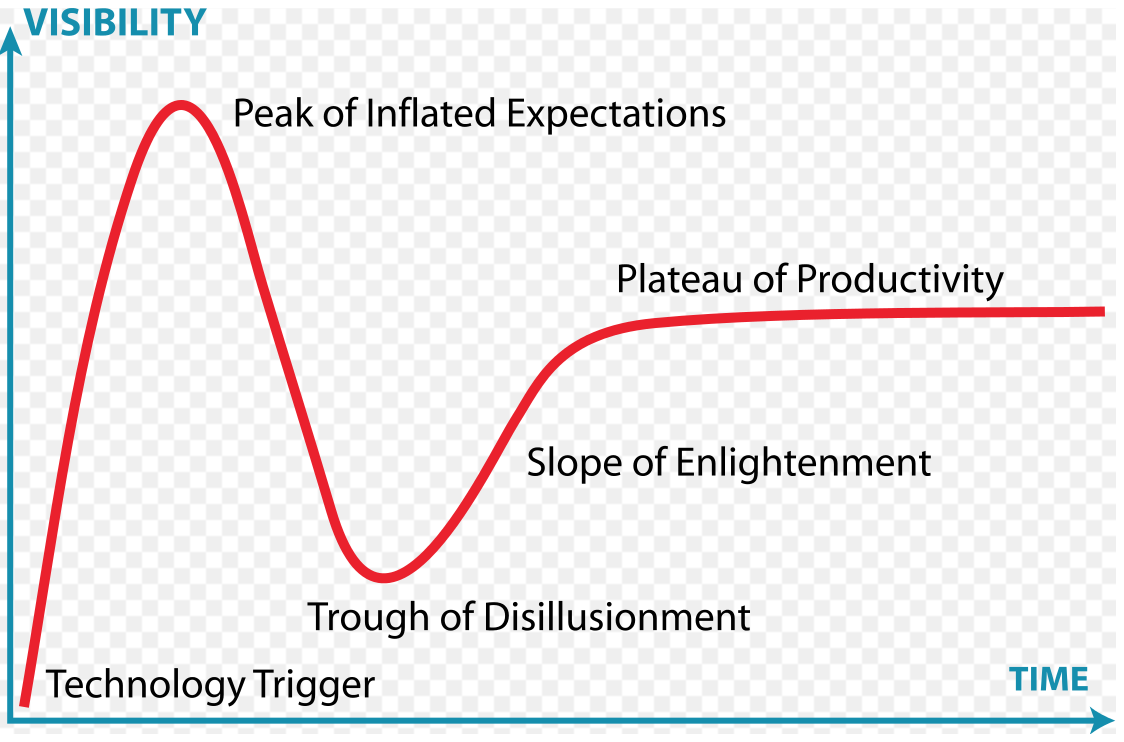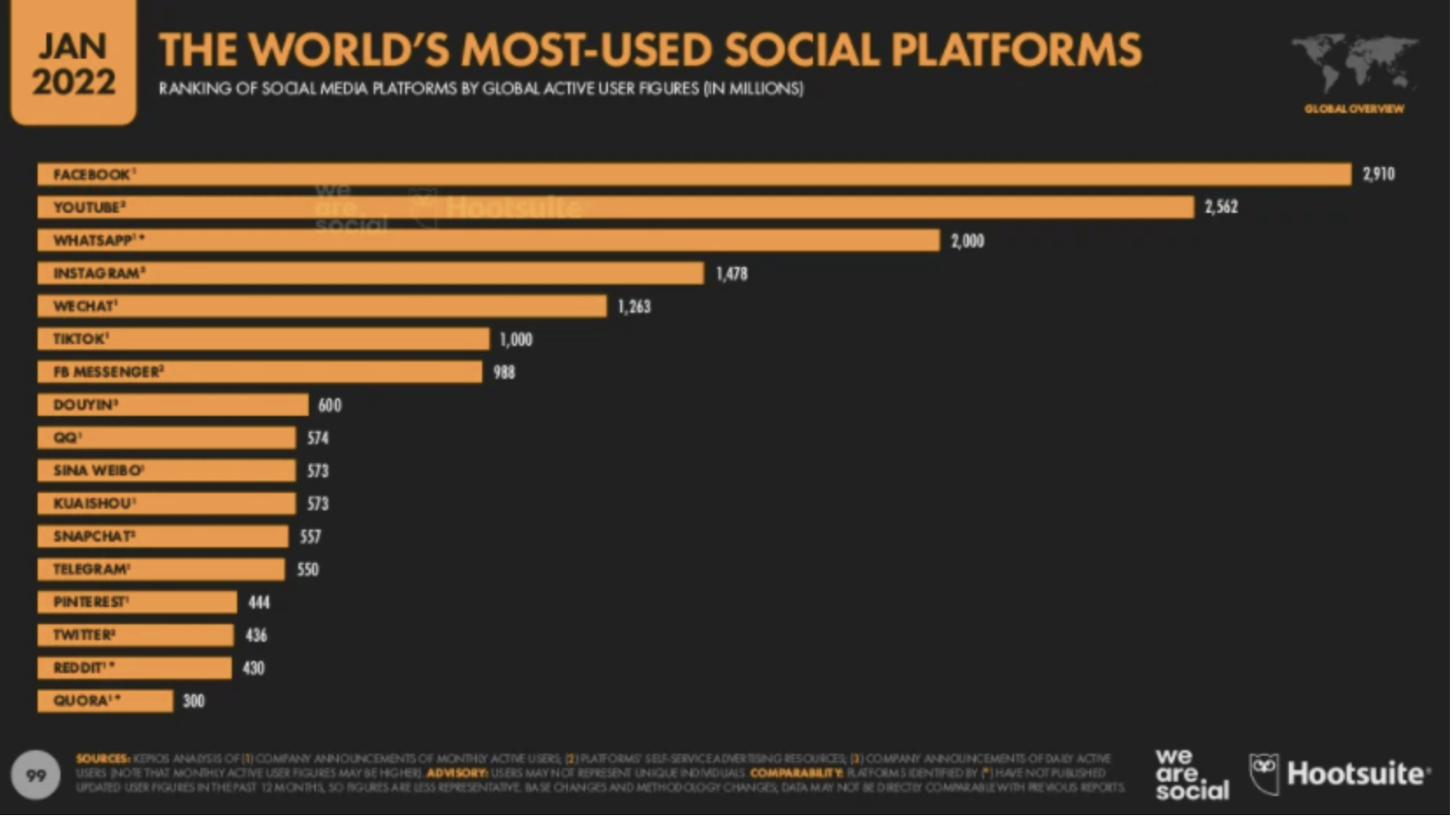68

9.1.1 The challenge of emerging technologies
It is not uncommon for a school principal, a college VP Education, or a university president to go to a conference and come back thrilled about the potential of the latest technology for teaching and learning. They are victims of what the consulting firm Gartner calls the hype cycle.
A new technology triggers excitement, the media picks up on it, the technology reaches a peak of inflated expectations, it starts to get more widely applied, disillusionment sinks in when faced with the realities of implementation, then the technology starts to find its niche as better understanding of its strengths and weaknesses emerge, eventually reaching a plateau of productivity, where it works well within its limits. MOOCs are an excellent example of this, with most knowledgeable observers in 2019 placing them towards the top of the slope of enlightenment or just emerging on to the plateau of productivity (see, for instance, Web Courseworks, 2018).
New technologies that have educational applications are constantly emerging. For instance in the first edition of this book (written in 2015) there was no extensive discussion of artificial intelligence, virtual reality or serious games, yet seven years later they are now at the forefront of many discussions about the future of digital learning, which is why this chapter has been added. There are several other technologies that could be included, but many of these will be subsumed under artificial intelligence.
I will not be able to go into depth about any of these three technologies (each deserves its own book), but they are significant enough to bring them to your attention. Once again, I will focus on their potential affordances, although it must be recognised that with all emerging technology, it may take time to identify all their advantages and disadvantages.
9.1.2 Social media
 Figure 9.1.2 Image: Dave Chaffey, Smart Insights, 2022
Figure 9.1.2 Image: Dave Chaffey, Smart Insights, 2022
Although social media are mainly Internet-based and hence a sub-category of computing, there are enough significant differences between educational social media use and computer-based learning or online collaborative learning to justify treating social media as a separate medium, although of course social media are dependent and often fully integrated with other forms of computing. The main difference is in the extent of control over learning that social media offer to learners.
9.1.2 What are social media?
Around 2005, a new range of web tools began to find their way into general use, and increasingly into educational use. These can be loosely described as social media, as they reflect a different culture of web use from the former ‘centre-to-periphery’ push of institutional web sites.
Here are some of the tools and their uses. Most examples below illustrate educational applications or sites. (There are many more possible examples):
Table 9.1.3 Social Media
|
The main educational feature or affordance of social media is that they empower the end user to access, create, disseminate and share information easily in a user-friendly, open environment. Usually the only direct cost is the time of the end-user. There are often few controls over content, other than those normally imposed by a state or government (such as libel or pornography). One feature of such tools is to empower the end-user – the learner or customer – to self-access and manage data (such as online banking) and to form personal networks (for example through FaceBook). For these reasons, some have called social media the ‘democratization’ of the web, although at the same time it could be argued that social media are now heavily commercialised through advertising, and there are major concerns about end-users’ privacy and the use of social media for disseminating false information and manipulating individual behaviour.
In general, social media tools are based on very simple software, in that they have relatively few lines of code. As a result, new tools and applications (‘apps’) are constantly emerging, and their use is either free or very low cost. For a good broad overview of the use of social media in education, see Lee and McCoughlin (2011).
9.1.3 General affordances of social media
The concept of ‘affordances’ is frequently used in discussions of social media. McLoughlin & Lee (2011) identify the following ‘affordances’ associated with social media (although they use the term web 2.0) in general:
- connectivity and social rapport;
- collaborative information discovery and sharing;
- content creation;
- knowledge and information aggregation and content modification.
However, we need to specify more directly the unique pedagogical characteristics of social media.
9.1.4 Presentational characteristics
Social media enable:
- networked multimedia communication between self-organising groups of learners;
- access to rich, multimedia content available over the Internet at any time or place, as long as there is a suitable Internet connection;
- learner-generated multimedia materials;
- opportunities to expand learning beyond ‘closed’ courses and institutional boundaries.
9.1.5 Skills development
Social media,when well designed within an educational framework, can help with the development of the following skills (click on each to see examples):
- digital literacy: this web site was designed by the Library at the University of British Columbia to enable students to manage their digital identity;
- independent and self-directed learning: this is a Wiki built by UBC math graduate students to provide assistance to undergraduate students in their exams;
- collaboration/collaborative learning/teamwork; this was a class project to build Wikipedia entries on Latin American literature by a third year undergraduate class at UBC;
- internationalisation/development of global citizens;
- networking and other inter-personal skills;
- knowledge management; students at UBC use social media to research emerging technologies and build a possible educational business around the technology
- decision-making in specific contexts (for example, emergency management, law enforcement).
9.1.6 Strengths and weaknesses of social media
Some of the advantages of social media are as follows:
- they can be extremely useful for developing some of the key skills needed in a digital age, such as digital communication skills;
- they can enable teachers to set online group work, based on cases or projects, and students can collect data in the field using social media such as mobile phones and apps such as Questogo;
- learners can post media-rich assignments either individually or as a group;
- these assignments when assessed can be loaded by the learner into their own personal learning environment or e-portfolios for later use when seeking employment or transfer to graduate school;
- learners can take more control over their own learning, as we have seen in connectivist MOOCs in Chapter 5 Section 3.2
- through the use of blogs and wikis, courses and learning can be thrown open to the world, adding richness and wider perspectives to learning.
However, many students are not, at least initially, independent learners (see Candy, 1991). Many students come to a learning task without the necessary skills or confidence to study independently from scratch (Moore and Thompson, 1990). They need structured support, structured and selected content, and recognized accreditation. The advent of new tools that give students more control over their learning will not necessarily change their need for a structured educational experience. However, learners can be taught the skills needed to become independent learners (Moore, 1973; Marshall and Rowland, 1993). Social media can make the learning of how to learn much more effective but still only in most cases within an initially structured environment.
The use of social media raises the inevitable issue of quality. How can learners differentiate between reliable, accurate, authoritative information, and inaccurate, biased or unsubstantiated information, if they are encouraged to roam free? What are the implications for expertise and specialist knowledge, when everyone has a view on everything? As Andrew Keen (2007) has commented, ‘we are replacing the tyranny of experts with the tyranny of idiots.’ Not all information is equal, nor are all opinions.
These are key challenges for the digital age, but as well as being part of the problem, social media can also be part of the solution. Teachers can consciously use social media for the development of knowledge management and the responsible use of social media, but the development of such knowledge and skills through the use of social media will need a teacher-supported environment. Many students look for structure and guidance in their learning, and it is the responsibility of teachers to provide it. We therefore need a middle ground between the total authority and control of the teacher, and the complete anarchy of the children roaming free on a desert island in the novel “Lord of the Flies” (Golding, 1954). Social media allow for such a middle ground, but only if as teachers we have a clear pedagogy or educational philosophy to guide our choices and use of the technology.
For more on social media, see Chapter 10, Section 8.
References
Bates, A. (2011) ‘Understanding Web 2.0 and Its Implications for e-Learning’ in Lee, M. and McCoughlin, C. (eds.) Web 2.0-Based E-Learning Hershey NY: Information Science Reference
Candy, P. (1991) Self-direction for lifelong learning San Francisco: Jossey-Bass
Golding, W. (1954) The Lord of the Flies London: Faber and Faber
Keen, A. (2007) The Cult of the Amateur: How Today’s Internet is Killing our Culture New York/London: Doubleday
Lee, M. and McCoughlin, C. (eds.) Web 2.0-Based E-Learning Hershey NY: Information Science Reference
Marshall, L. and Rowland, F. (1993) A Guide to learning independently Buckingham UK: Open University Press
McCoughlin, C. and Lee, M. (2011) ‘Pedagogy 2.0: Critical Challenges and Responses to Web 2.0 and Social Software in Tertiary Teaching’, in Lee, M. and McCoughlin, C. (eds.) Web 2.0-Based E-Learning Hershey NY: Information Science Reference
Moore,M. (1973) Toward a Theory of Independent Learning and Teaching, Journal of Higher Education, Volume 44, No. 9
Moore, M. and Thompson, M. (1990) The Effects of Distance Education: A Summary of the Literature University Park, PA: American Center for Distance Education, Pennsylvania State University
Activity 9.1 Identifying the unique pedagogical characteristics of social media
1. Take one of your courses, and analyse how social media could be used in your course. In particular:
- what new learning outcomes could the use of social media help develop?
- would it be better just to add social media to the course or to re-design it around social media?
2. I have offered only a cursory list of the unique pedagogical characteristics of social media. Can you think of others that have not already been covered in this section?
3. How does this chapter influence your views on students bringing their own devices to class?
4. Are you (still) skeptical about the value of social media in education? What do you see as its downsides?
For feedback on some of these questions and some more general points about social media in education, click on the podcast below.
